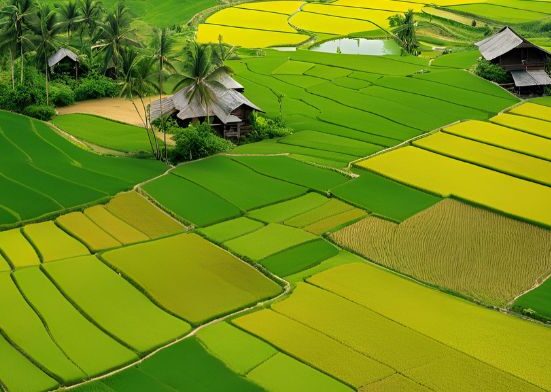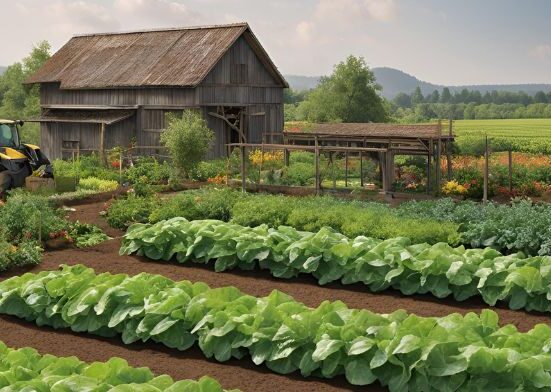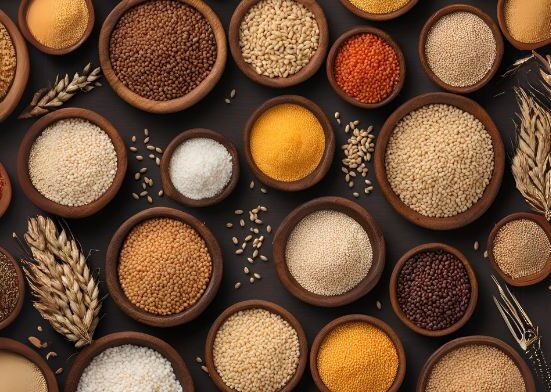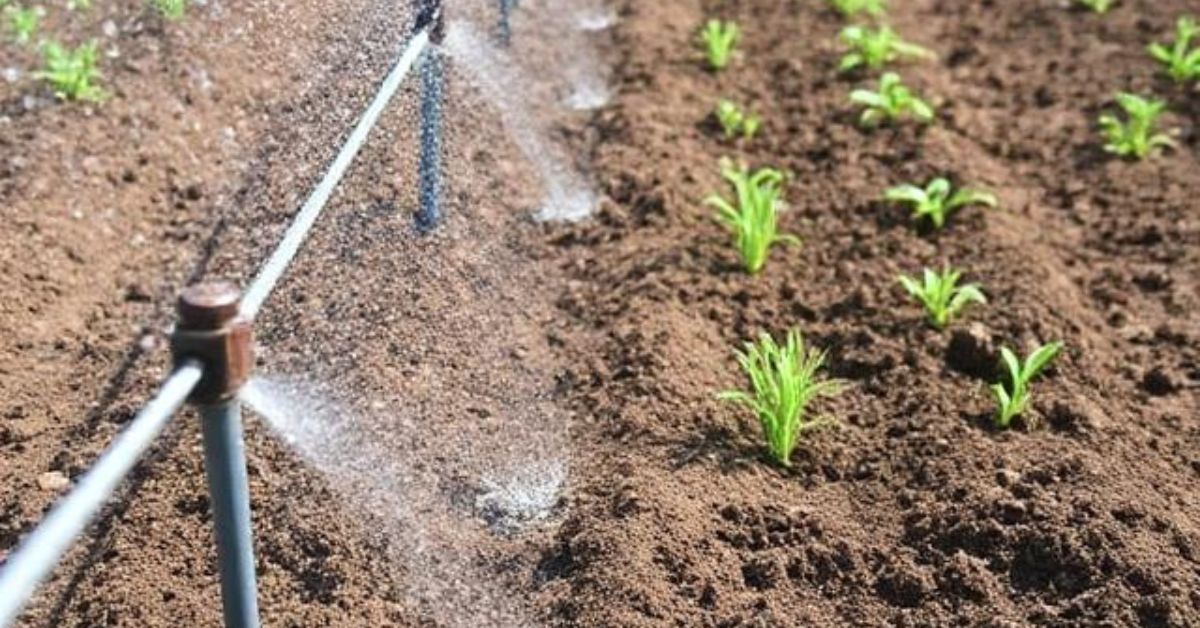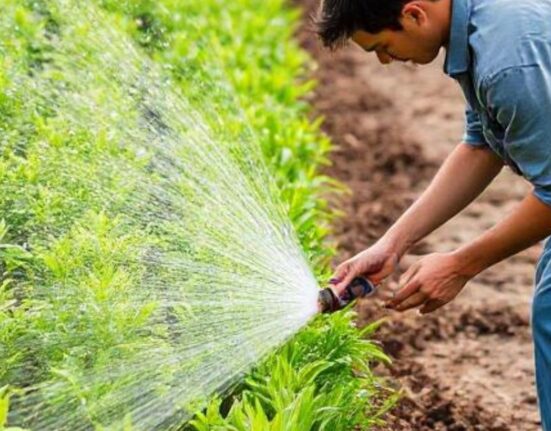Water is the lifeblood of agriculture, and the method used to deliver it to crops can significantly impact efficiency, yield, and environmental sustainability. Two of the most common irrigation techniques—Drip Irrigation vs. Flood Irrigation—represent contrasting approaches to water management. While flood irrigation provides water to entire fields, drip irrigation delivers small, controlled amounts of water directly to the root zone. This blog post examines how these two differ from one another. systems, comparing their mechanisms, benefits, drawbacks, and suitability for various farming scenarios. By the end, you’ll clearly understand which method might best suit your agricultural needs.
What is Drip Irrigation?
Drip irrigation, also known as trickle or micro-irrigation, is a precision-based system that delivers water straight to the plant roots via a system of tubes, pipes, and emitters. Water is released slowly through drippers, sprinklers, or perforated pipes, Flood Irrigation Pros and Cons ensuring minimal waste. This method is highly controlled, often automated, and can be modified to meet each plant’s unique requirements.
Key Features of Drip Irrigation
- Targeted Water Delivery: Water is applied directly to the root zone, reducing evaporation and runoff.
- Automation: Systems can be equipped with timers, sensors, and fertigation (fertilizer injection) capabilities.
- Adaptability: Suitable for various crops, terrains, and soil types.
- Water Efficiency: involves filling a field with water and allowing it to spread out.
What is Flood Irrigation?
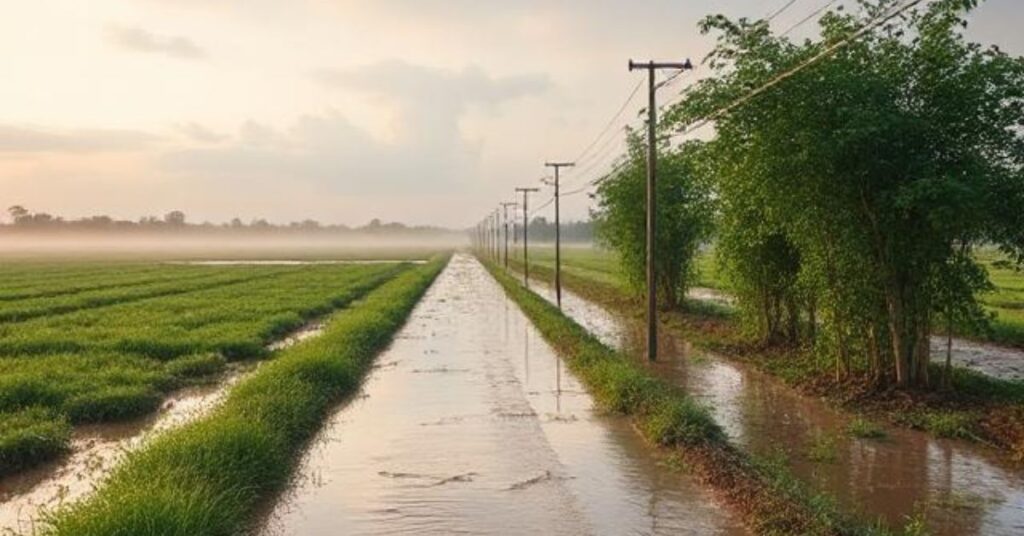
Flood irrigation, one of the oldest methods,entails pouring water into a field and letting it spread throughout the surface and infiltrate the soil. This technique is typically used in flat or gently sloping fields and is common in regions with abundant water resources. Variations include furrow irrigation (water flows through channels between crop rows) and basin irrigation (water is contained within small, leveled areas).
Key Features of Flood Irrigation
- Simplicity: Requires minimal infrastructure, relying on gravity to distribute water.
- Low Initial Cost: Involves basic setups, such as ditches or canals, making it affordable for large-scale farms.
- Broad Coverage: Ideal for crops like rice, which thrive in waterlogged conditions.
- Dependence on Water Availability: Requires a reliable and abundant water source.
Comparing Drip and Flood Irrigation
To understand which system is better suited for specific needs, let’s compare drip and flood irrigation across several critical factors: water efficiency, cost, labor, crop suitability, environmental impact, and scalability.
Water Efficiency
Drip Irrigation: The water efficiency of drip irrigation is well known. Water delivery straight to the root zone reduces evaporation. runoff, and deep percolation. Studies show that drip systems can achieve an 80-95% water use efficiency, making them ideal for water-scarce regions or areas with high water costs.
Flood Irrigation: Flood irrigation is less efficient, with water use efficiency typically ranging from 40-60%. Significant water is lost to evaporation, runoff, or infiltration beyond the root zone. However, this inefficiency may be less of a concern in areas with abundant water or crops requiring saturated conditions (e.g., rice paddies).
Verdict: Drip irrigation is far more water-efficient, making it the preferred choice in regions facing water scarcity or where conservation is a priority.
Cost Considerations
Drip Irrigation: The initial cost of drip irrigation is high due to the need for pipes, emitters, filters, pumps, and often automated control systems. Installation and maintenance can also be expensive, particularly for large fields. However, long-term savings from reduced water and labor costs can offset the upfront investment.Flood irrigation has a low initial cost and requires only basic infrastructure like canals, ditches, or levees. Maintenance is minimal, but operational costs may rise if water must be pumped or transported over long distances.
Verdict: Flood irrigation is more affordable upfront, but drip irrigation may be more cost-effective over time, especially in water-scarce or high-labor-cost regions.
Labor Requirements
Drip Irrigation: While drip systems require skilled labor for installation and maintenance, they are often automated, reducing the need for ongoing manual intervention. Clogged emitters or damaged pipes may require periodic checks, but labor demands are generally low once the system is operational.
Flood Irrigation: Flood irrigation is labor-intensive, particularly in-furrow or basin systems, where workers must manage water flow, construct channels, and ensure even distribution. Automation is rare, and the process often requires constant monitoring.
Verdict: Drip irrigation requires less ongoing labor, Exploring The Flood Irrigation making it more suitable for farms with limited workforce availability.
Crop Suitability
Drip Irrigation: Drip irrigation is highly versatile and can be used for various crops, including vegetables, fruits, orchards, and row crops. It is particularly effective for high-value crops that receive precise water and nutrient delivery. However, it may not be ideal for crops like rice, which require standing water.
Flood Irrigation: Flood irrigation is best suited for crops that tolerate or require waterlogged conditions, such as rice, wheat, or certain pasture crops. It is less effective for crops sensitive to overwatering or those grown in uneven terrain.
Verdict: Drip irrigation is more versatile for diverse crops, while flood irrigation is better for specific water-intensive crops.
Environmental Impact
Drip Irrigation: Drip irrigation has a lower environmental footprint due to its efficient water use, which reduces strain on local water resources. Additionally, it reduces nutrient leakage and soil erosion. as water and fertilizers are applied directly to the root zone. However, producing and disposing of plastic components (e.g., tubing) can contribute to environmental waste.
Flood Irrigation: Flood irrigation can lead to significant environmental issues, including soil erosion, salinization, and nutrient runoff, The Complete Beginner’s Guide to Drip Irrigation which can pollute nearby water bodies. Overuse of water can also deplete local aquifers or rivers, impacting ecosystems.
Verdict: Drip irrigation is more environmentally friendly, though sustainable practices in flood irrigation (e.g., laser leveling) can mitigate some negative impacts.
Scalability and Terrain
Drip Irrigation: Drip systems are highly adaptable to various field sizes and terrains, including sloped or irregularly shaped fields. They are particularly effective for small to medium-sized farms or high-value crops. Scaling up to vast fields can be costly due to infrastructure requirements.
Flood Irrigation: Flood irrigation is well-suited for large, flat fields where water can flow evenly. It is less practical for sloped or uneven terrain, Sustainable Irrigation: Smart Water where water may pool or run off unevenly.
Verdict: Drip irrigation is more adaptable to diverse terrains, while flood irrigation is better for large, flat fields.
Advantages and Disadvantages
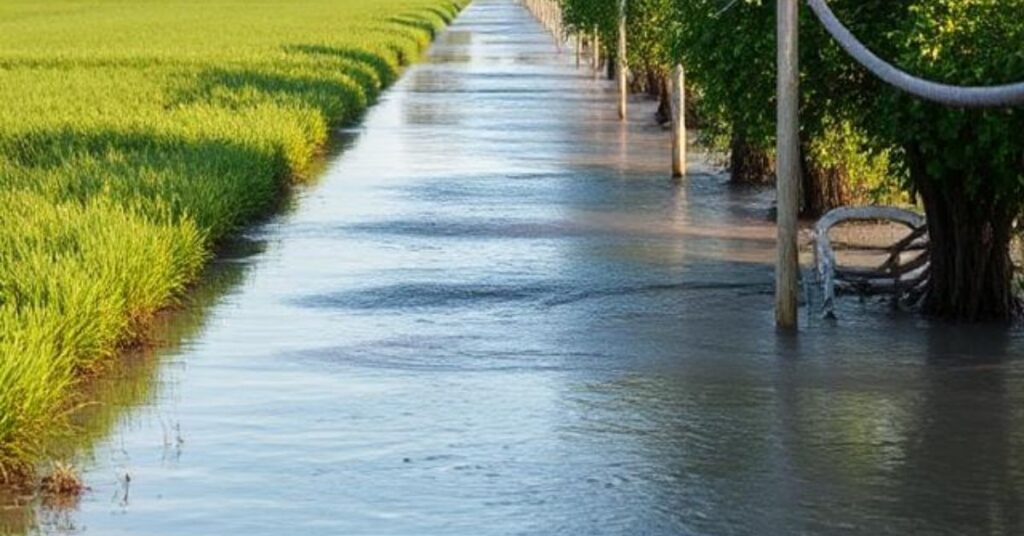
Drip Irrigation
Advantages:
- High water and nutrient efficiency.
- appropriate for a variety of crops and landscapes.
- Reduces weed growth by limiting water to crop roots.
- It can be automated, advantages of flood irrigation saving labor and time.
Disadvantages:
- High initial and maintenance costs.
- Requires technical expertise for installation and upkeep.
- Emitters can clog, requiring regular monitoring.
Flood Irrigation
Advantages:
- Low initial cost and simple setup.
- Effective for water-intensive crops like rice.
- Minimal equipment maintenance.
Disadvantages:
- High water waste and low efficiency.
- Labor-intensive and prone to uneven water distribution.
- It can cause soil erosion, salinization, and nutrient runoff.
Sustainability and Soil Health
Sustainability and soil health are critical factors when evaluating irrigation methods, and the differences between drip and flood irrigation are significant in this regard.Drip irrigation is widely recognized for its eco-friendly and sustainable approach.Watering plant roots gradually and directly is beneficial. preserve soil structure, prevents erosion, flood irrigation cost per acre and reduces water waste. Because the surface soil stays relatively dry, drip irrigation also minimizes weed growth and lowers the risk of fungal diseases. Over time, this method maintains healthy microbial activity and supports long-term soil fertility, Top Tips For Better Surface Irrigation Systems essential for sustainable farming.
In contrast, flood irrigation can negatively impact soil health, especially when overused. Compaction, soil erosion, and other problems can result from too much water. and nutrient leaching, deleting the land’s productivity over time. In poorly drained soils, flood irrigation can also cause waterlogging, suffocating plant roots and reducing crop yields. Additionally, frequent flooding may contribute to the buildup of salts in the soil, especially in arid regions, which further hampers plant growth.Choosing the right method isn’t just about immediate results—it’s about protecting the land for future generations. Drip irrigation clearly offers a more sustainable path forward for maintaining soil health and long-term agricultural viability.
Climate Suitability
When choosing between drip irrigation and flood irrigation, The most efficient and sustainable approach depends in large part on the climate. Drip irrigation is particularly well-suited for arid and semi-arid climates, where water conservation is critical. In hot and dry regions, evaporation rates are high, and traditional irrigation methods often lead to significant water loss. Drip systems minimize this by delivering water directly to the plant roots, reducing evaporation, and ensuring every drop counts. This makes drip irrigation a favorite in parts of the Middle East, California, and other drought-prone areas.
On the other hand, flood irrigation is more commonly used in regions where water is abundant or rainfall is seasonal but heavy, such as in South Asia or the Nile River basin. It works well in flat terrains and crops that can tolerate or benefit from water saturation, like rice. However, flood irrigation can become unsustainable and damaging to crops and soil in climates with frequent droughts or inconsistent water supplies.Ultimately, understanding the local climate is essential for farmers to choose the most effective irrigation method, balancing productivity with resource conservation and environmental responsibility.
Choosing the Right System
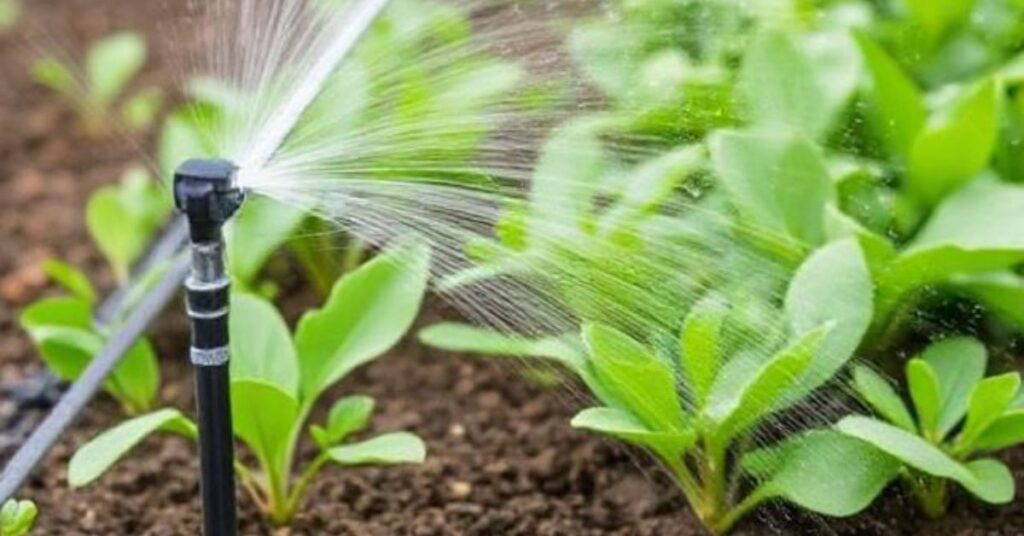
The choice between drip and flood irrigation depends on several factors, including water availability, crop type, budget, labor availability, and environmental goals.The following situations will help you make a decision:
Choose Drip Irrigation If:
- You’re in a water-scarce region or face high water costs.
- You grow high-value crops like vegetables, fruits, or orchards.
- Your fields have uneven terrain or varying soil types.
- You prioritize automation and long-term efficiency.
Choose Flood Irrigation If:
- You have abundant water resources and low water costs.
- You grow crops like rice or wheat that thrive in wet conditions.
- Your budget is limited, and you need a low-cost solution.
- You manage large, flat fields with minimal labor constraints.
Innovations and Future Trends
Both drip and flood irrigation are evolving with technology. For drip irrigation, advancements include solar-powered systems, smart sensors for real-time monitoring, and biodegradable tubing to reduce environmental impact. For flood irrigation, innovations like laser leveling and surge irrigation (intermittent water application) improve efficiency and reduce water waste. As climate change intensifies water scarcity, hybrid approaches—combining elements of both systems—may emerge to balance efficiency and affordability.
Conclusion
Drip and flood irrigation represent two ends of the spectrum in agricultural water management. Drip irrigation excels in water efficiency, versatility, and environmental sustainability but has higher costs and technical demands. Flood irrigation is affordable and practical for specific crops but is less efficient and environmentally taxing. By weighing factors like water availability, crop needs, and long-term goals, farmers can choose the system that best aligns with their priorities. As technology advances, both methods will continue to evolve, offering new opportunities to optimize water use and ensure sustainable agriculture for the future.
FAQ
What is the main difference between drip and flood irrigation?
Water is delivered straight to plant roots using drip irrigation. while flood irrigation floods the entire field. Drip is more precise and water-efficient, whereas flood is simpler but wastes more water.
Which irrigation method is better for water conservation?
Drip irrigation is significantly better for water conservation. It minimizes evaporation and runoff by targeting water delivery, making it ideal for arid regions or areas with limited water resources.
Is flood irrigation cheaper than drip irrigation?
Initially, yes.flooding irrigation is cheaper to install but less efficient long term. Drip systems have higher upfront costs but save water, reduce labor, and lower operational expenses over time.
Can all crops use drip irrigation?
Most crops benefit from drip irrigation, especially vegetables, fruits, and row crops. However, some large-scale grains and flood-tolerant crops may perform well with traditional flood methods.
Does drip irrigation improve crop yields?
Yes, drip irrigation often improves crop yields by providing consistent moisture and reducing plant stress. It also limits weed growth and disease, promoting healthier, more productive crops.



